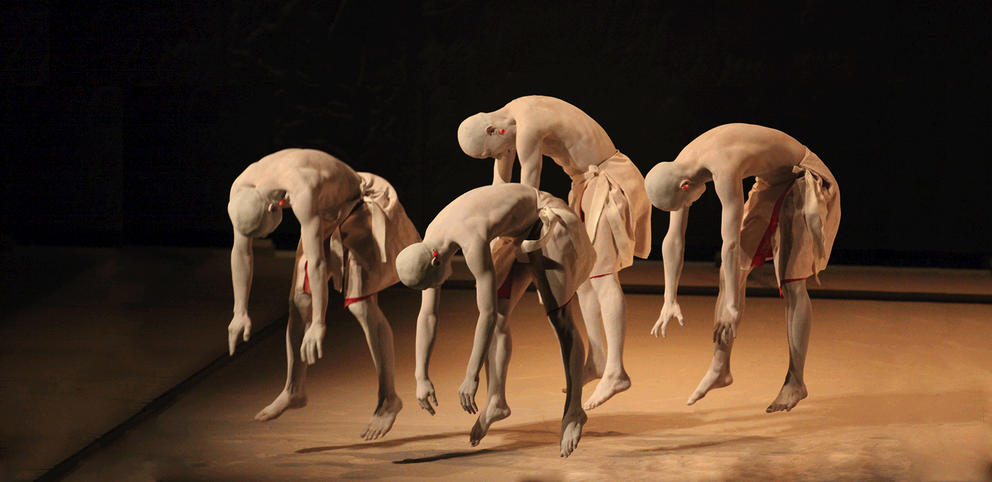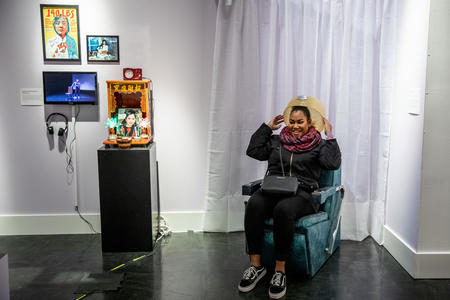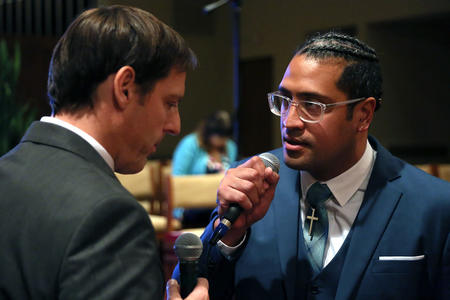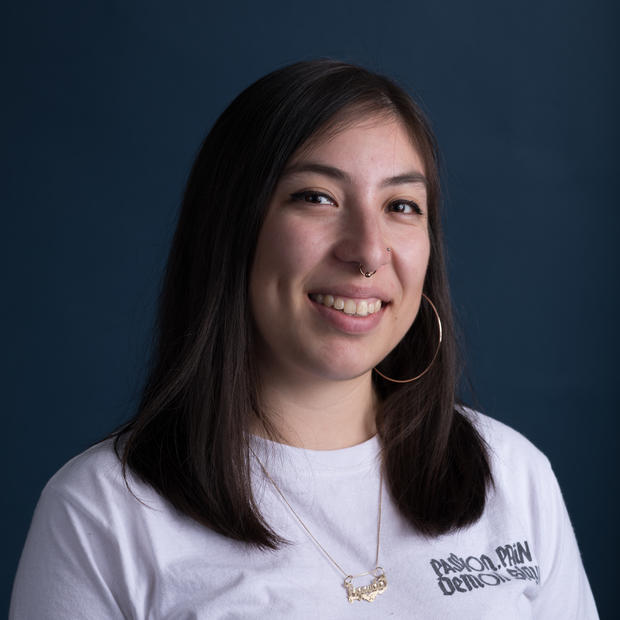Sankai Juku: Meguri: Teeming Sea, Tranquil Land
When people think of butoh, they often call up images of white body paint and painfully slow movements. But did you know that it comes from “Anokoku-Buyuo,” which translates to “Dance of Darkness”? Initially, in post-World War II Japan, the dance form was meant to be a deliberately crude rebellion against Western and Japanese high art. Ushio Amagetsu founded his legendary butoh dance company, Sankai Juku, in 1978 to show the art form’s softer side. The group toured all over the world as it rose to dance world fame. Famously, during one of those performances in Seattle, in 1985, a rope holding a dancer hanging from a five-story building broke, killing the performer in a show originally meant to allegorize life and death. Perhaps fittingly, the group’s new show, Meguri: Teeming Sea, Tranquil Land, is intended as a meditation on the cycles of the seasons, the circle of life and death and the passage of time. –M.V.S.
If you go: Sankai Juku at Meany Center for the Performing Arts, Oct. 17-19 at 8 p.m. (Tickets start at $51)
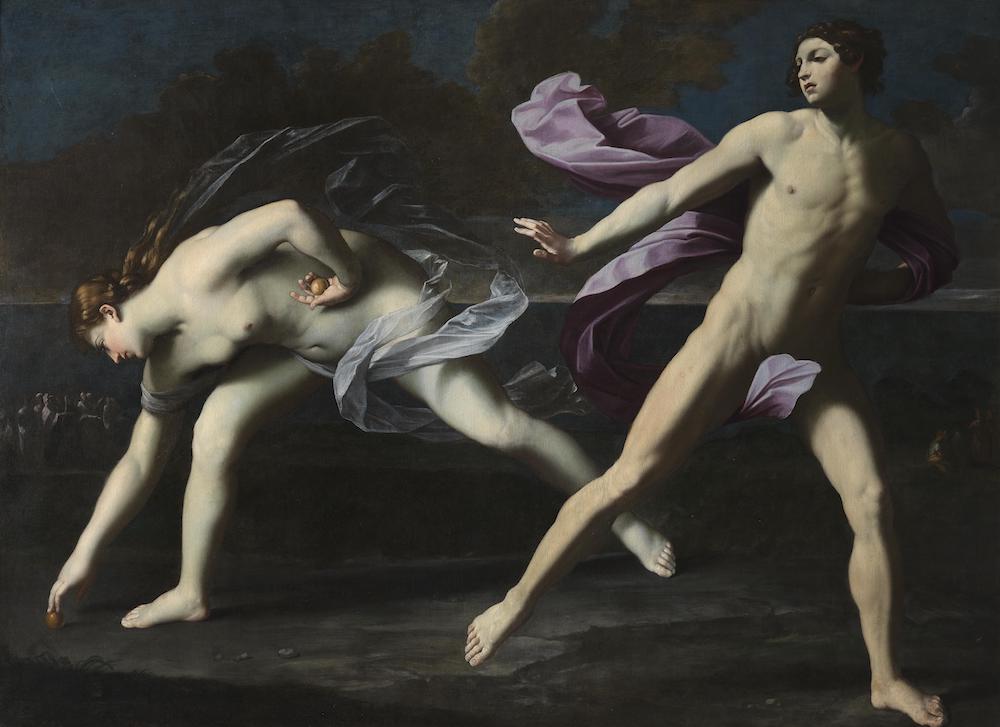
Flesh and Blood: Italian Masterpieces from the Capodimonte Museum
Just in time for Halloween, the Seattle Art Museum opens Flesh and Blood, a collection of Renaissance paintings that reveal bodies, blood and horrific scenes. On rare loan from the Capodimonte Museum in Naples, Italy, the exhibit showcases 16th and 17th century masterpieces from the likes of Titian, Raphael and Guido Reni. What’s striking in this visceral show is the obsession with the human form, its lumps, wrinkles and flushes of color. As SAM curator Chiyo Ishikawa noted during a preview event, the painters were especially adept at hands (notoriously hard to capture), since at the time, gestures held great symbolism in the artworks. “You could walk through this exhibit and just look at hands and get a lot of the expression,” she said. For all their intense realism, the works also show some seriously freaky scenes, both mythological and biblical. There’s “The Assumption of Mary Magdalene,” who floats nude up to the heavens for one of her seven daily sessions of spiritual nourishment. And “Danae,” a nude in recline, about to be impregnated by Zeus via a shower of gold coins. The showstopper is “Judith Slaying Holofernes,” painted by Artemisia Gentileschi, whose rape by her painting teacher is confirmed in ancient trial documents. Her famously gory painting of Judith beheading Holofernes reveals a woman approaching her task with a steely concentration fueled by rage. -B.D.
If you go: Seattle Art Museum, Oct. 17-Jan. 26, 2020. ($20-$30)
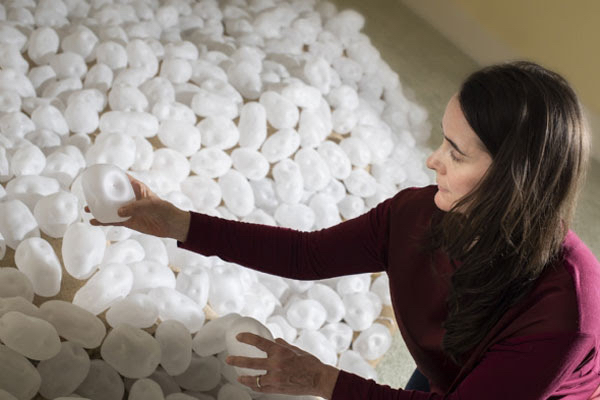
Refract: The Seattle Glass Experience
The Pacific Northwest is a world capital of art glass — bested only by Murano, Italy (near Venice), when it comes to the number of glassblowing studios in the area. The Italians have been doing it since the 13th century, but here, the movement gained steam in the 1970s, after Dale Chihuly founded the Pilchuck Glass School. Now some 700 glassmakers live and work in Washington. (Learn how some are working to make the art form more sustainable.) And it’s high time for a massive glassmaker festival! The inaugural Refract: The Seattle Glass Experience kicks off this weekend with more than 50 arts organizations and artists hosting gallery shows, tours, artist talks and demonstrations, and, of course, parties across Seattle and Tacoma. Consider the Hotshop Hootenanny at Glass Eye Studio (founded in 1978), a Friday night “hotshop jam session” featuring live music by the Dusty 45s. Or perhaps something more contemplative, such as Seattle-based Irish artist Paula Stokes’ new installation, 1845: Memento Mori at Method gallery. For this tribute to the victims of the Irish Potato Famine, Stokes created 1,845 blown-glass potatoes and placed them in the form of a burial monument. And at Tacoma Art Museum (Oct. 17), esteemed artist Debora Moore will talk about her exhibit of life-sized glass trees (read our story). The diverse span of work is a reflection of the huge range of glass art happening in this region — and nowhere else. -B.D.
If you go: Refract festival events run Oct. 17-20, times, prices and venues vary; gallery and museum shows extend longer, check websites.
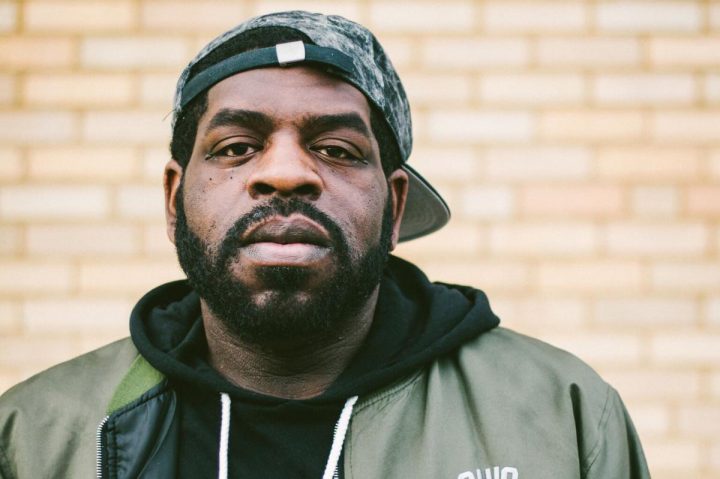
Hanif Abdurraqib
There are many reasons to catch cultural critic, essayist and poet Hanif Abdurraqib on stage with Seattle Arts & Lectures. For one, he’s on his way to becoming one of the nation’s foremost cultural critics. (Don’t miss his essay on the “the white rapper’s burden.”) Second: Go Ahead in the Rain, Abdurraqib’s best-selling chronicle of legendary hip-hop group A Tribe Called Quest was recently nominated for a National Book Award in the nonfiction category. Third, perhaps the writer will read from his touching, well-received new poetry collection “A Fortune for Your Disaster,” which includes 13 poems titled “How Can Black People Write About Flowers in a Time Like This.” And last but not least, Abdurraqib purchased 100 tickets for the lecture himself, to give away free to make sure cost wasn’t a barrier to anyone wanting to attend. –M.V.S.
If you go: Hanif Abdurraqib at Town Hall Seattle, Oct. 23 at 7:30 p.m. ($5-$10)
National Period Day Rally
Last year, Seattle City Councilmember Teresa Mosqueda proposed studying what would happen if menstrual products were exempt from sales tax. She noted that purchasing menstrual products isn't optional, but necessary, for women (who have historically made 76 cents to each dollar that men make). During the legislative session earlier this year, three bills addressing the issue were drafted, but never made it out of committee. The National Organization for Women (NOW) is calling for renewed attention to period inequity by planning nationwide rallies on National Period Day (Oct.19) to protest the sales tax on menstrual products in 34 states. (Only 10 states exempt menstrual products from taxes.) In Washington, the sales tax on “nonessential items” (including tampons and pads) has been criticized for hitting low-income residents the hardest. Washington state sales tax rates are considered some of the most regressive in the country. NOW blames the stigma associated with talking about periods for the lack of awareness surrounding low-income and homeless women’s experiences. The nonprofit cites a study that found 46% of low-income women had to choose between eating and buying pads or tampons. In Seattle, the rally will take place at Cal Anderson Park on Capitol Hill, where participants are encouraged to bring pro-period posters and wear red (of course). –A.P.F.
If you go: Washington National Period Day Rally, Cal Anderson Park, Oct. 19 at noon. (Free)
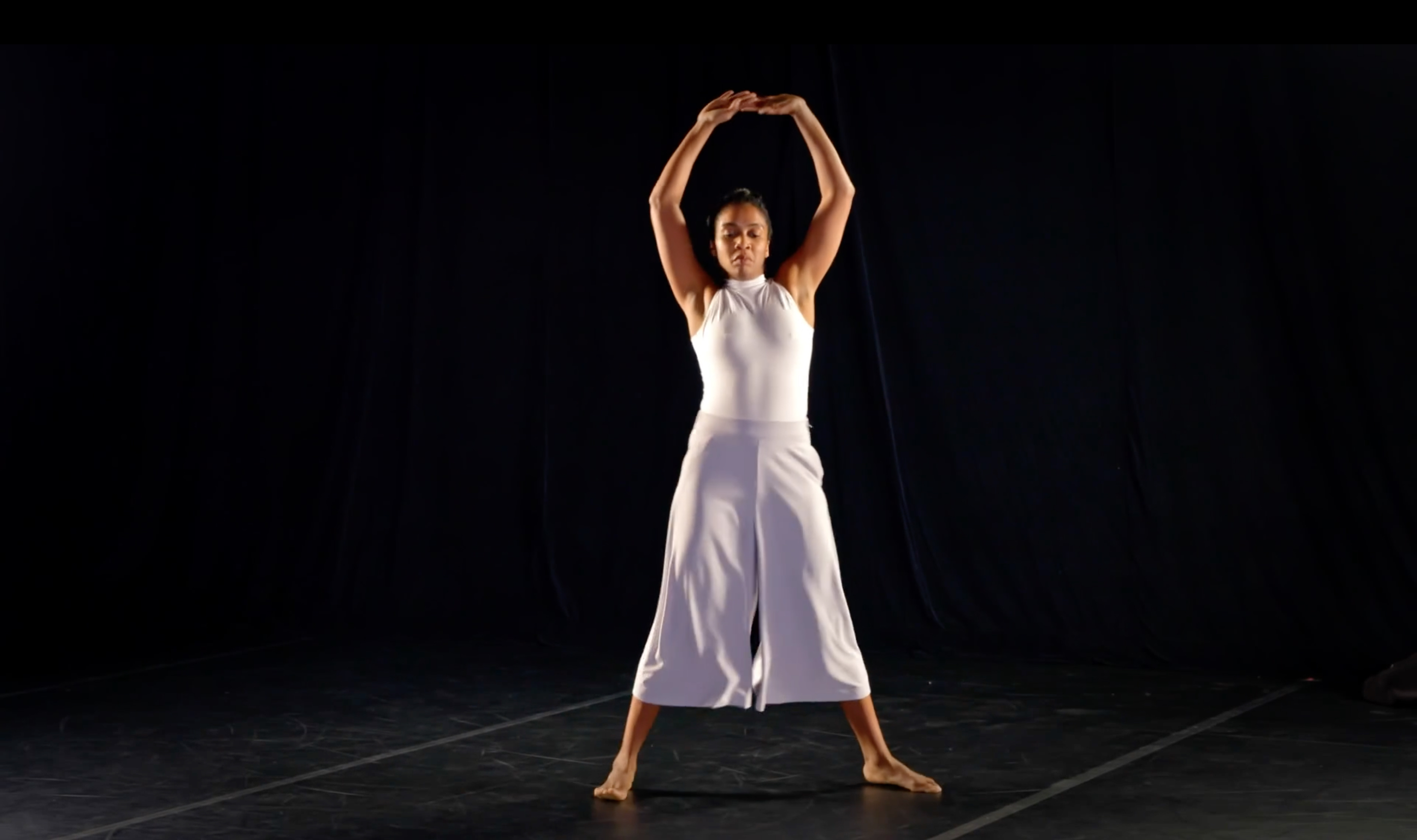
Space Needle: A Hidden History
Do you know the name Syvilla Fort? You should. A new documentary posits that the pioneering African American dancer may have been the indirect inspiration for the shape of the Space Needle. Born in Seattle in 1917, Fort showed early prowess as a dancer, but was denied admission to ballet classes because of her race. After private lessons, she attended Cornish College as one of the first Black students and emerged as a prominent dancer and choreographer. In the 1930s, she worked with Merce Cunningham and developed her own “Afro-modern” style. After moving to New York, she taught movie stars (James Dean, Marlon Brando, Eartha Kitt) how to dance for roles. In short, she was a big deal who has been largely forgotten. But in Space Needle: A Hidden History, local filmmaker B.J. Bullert suggests she may have played a lasting role in Seattle culture (read our story). Fort was hanging around with an artful Cornish crew that included sculptor David Lemon, who made “The Feminine One,” the wooden sculpture that Victor Steinbrueck says inspired his Space Needle design. So was Fort the inspiration for the sculpture’s graceful lines, nipped waist and sturdy stance? On Tuesday, Bullert will screen her short documentary and host a panel discussion that includes Peter Steinbrueck (Victor’s son), who thickens the plot by revealing that his father had a romantic relationship with Fort. -B.D.
If you go: Seattle Downtown Public Library, Oct. 22 at 7 p.m. (Free.)

Horror and suspense films for a Halloween mood
The Pacific Northwest has a longstanding affinity with the macabre and paranormal (and no one knows that better than Crosscut’s Knute Berger). And as darker, wetter and colder days set in, so do Halloween and Day of the Dead spookiness. Seattle’s local theaters are amping up the creepy vibe with an assortment of spine-tingling flicks. Central Cinema will be showing Fright Night, Hausu, Fast Friday and Blood Diner throughout the week (with a one-time special appearance by Blood Diner director Jack Kong on Oct. 21). The Grand Illusion’s October program includes Black Death, The Dead Center, Golden Glove, Kill List and The Wicker Man: Final Cut. Or consider three back-to-back corny, cheap and quirky horror films during the “Scarecrow Video Weirdo Horror Triple Feature” on Oct. 20 (also and Grand Illusion, which feels like it might be haunted itself). At Columbia City’s new theater, The Beacon, the October Country program includes nine films that range from vampiric anime to ’80s slasher films. I recommend In the Mouth of Madness, in which the story of a book that drives readers insane unfolds a la H.P. Lovecraft. SIFF Cinema Egyptian screens Parasite; by South Korean filmmaker Bong Joon-ho (creator of the Godzilla throwback film The Host and dystopian sci-fi thriller Snowpiercer). Finally, join local “horror aficionado” Dan Doody at SIFF Film Center to analyze the 1976 cult classic The Omen, scene by Satanic scene. –A.P.F.

Earshot Jazz Festival
The region’s longstanding and beloved Earshot Jazz festival continues this week, with a full roster of must-see performances. Grammy winning chanteuse Cécile McLorin Salvant, who Downbeat deemed 2019’s Jazz Artist and Female Vocalist of the Year performs at Town Hall (Oct. 18) with the Aaron Diehl Trio (and if you haven’t yet experienced the glorious new acoustics in the remodeled Great Hall, this is the perfect opportunity). The city’s lauded Roosevelt High School Jazz Band is joined by celebrated Seattle multi-instrumentalist Jay Thomas for a performance in their home venue (Oct. 19), proving that, yes, young people love jazz, too. And vibrant young vibraphonist Joel Ross, who apprenticed with Herbie Hancock, brings his mallets and a full quintet to Seattle Art Museum (Oct. 19). There’s a ton more for cool cats, so don’t miss the full lineup. -B.D.
If you go: Earshot Jazz Festival runs through Nov. 6. Times, prices and venues vary.
Get the latest in local arts and culture
This weekly newsletter brings arts news and cultural events straight to your inbox.

